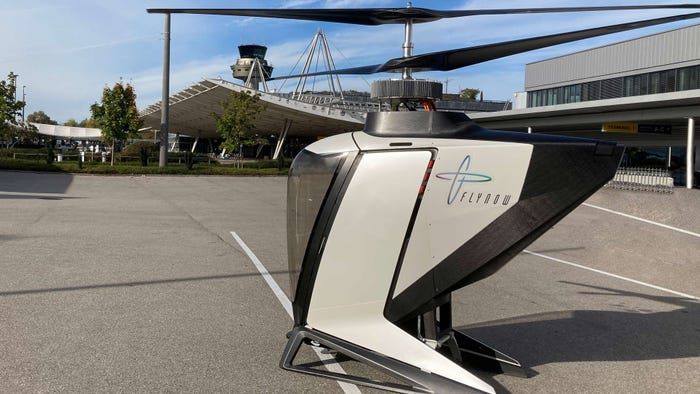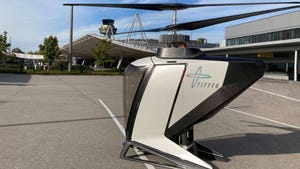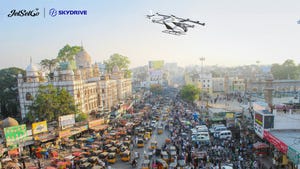Building a National IoT Network for MachinesBuilding a National IoT Network for Machines
San Diego-based Ingenu is busily expanding its machine network across the United States. In this interview with Landon Garner, the company’s Chief Marketing Officer sheds light on the company’s roots and its plan.
August 18, 2016

Could you provide me with some background on the company’s history?
Landon Garner, Ingenu CMO: In 2002, the executive John Horn was enlisted to run a division at T-Mobile that was initially focused on telematics and later M2M. Early on, the revenue of the group was a rounding error on the balance sheet, but then the business unit began to grow quickly.
The executive team at T-Mobile came to him and said: “this is outside of our focus, and it is not part of our core strategy.”
 Horn went back to the leadership team with the idea to spin off the company that would eventually be named RacoWireless that would still make use of T-Mobile connectivity. Within a matter of years, the business grew from having less than 100,000 subscribers to millions.
Horn went back to the leadership team with the idea to spin off the company that would eventually be named RacoWireless that would still make use of T-Mobile connectivity. Within a matter of years, the business grew from having less than 100,000 subscribers to millions.
In 2014, the company would go on to merge with KORE Wireless. At that point, our whole value proposition was to make it easier for machines to get connected to a network. In the early days of M2M, it took about a month to connect a device to a network. We got that process down to a day.
Many connected devices are going offline with the sunsetting of 2G and 3G. How is Ingenu addressing that?
Garner: There can be challenges associated with connecting machines to a network designed to support consumers’ needs. The transition from 2G to 3G and beyond is leaving the vast majority of devices disconnected as those older networks are sunsetted. The number of affected devices could be as high as 100 million between multiple technologies.
While John Horn was still the president at Raco, a small company called Onramp Wireless out of San Diego approached him to lead that business, which was already working on this problem. The company had developed a technology that was completely dedicated to machines and designed with longevity in mind. There was no voice or high-speed data, and they controlled all of the IP.
Horn had the idea of licensing the technology and building a nationwide network for machines. Onramp came back with an offer that would bring Horn over to Onramp Wireless and implement the plan to build the national public network.
From there, the company eventually rebranded from Onramp to Ingenu and renewed its focus to building public connectivity around the world.
You recently announced that Ingenu’s service now covers all of Phoenix. Could you tell me more about that?
Garner: Ingenu is covering more than 1850 square miles and 3.1 million residents with 10 of our patented Random Phase Multiple Access (RPMA) access points.
From a coverage standpoint, Phoenix is second biggest city in the country in terms of acreage. And Phoenix is just a hotbed of technology consumption and development. We have a lot of blossoming industries that are feeding the IoT.
If you have been to Phoenix before, you know that this valley is optimal for providing network coverage because it is pretty flat in the middle. The fact that we were able to build this entire footprint over the Phoenix metro with ten towers is noteworthy. If you were to compare that to a cellular network infrastructure, you would be looking at thousands of towers to provide that same type of coverage.
The RPMA technology that makes this possible is covered with 32 patents and was developed by our founders who were Qualcomm engineers during the development of CDMA. If you look at our board, you can also see Dr. Andrew Viterbi, who cofounded Qualcomm. We also have the former CEO of Verizon on our board—Ivan Seidenberg and Richard Lynch, who was Verizon’s CTO. These people get it, and they understand that you can’t just give machines the same thing you are giving people and expect to get results. We designed RPMA from the ground up and can cover large areas of land at low cost. It costs Ingenu $20,000 to $30,000 to put equipment up one tower. On the cellular side, it’s going to be even more than that – up to 10-30 times as much. They don’t use unlicensed spectrum like we do. So they are paying for that in addition to their higher infrastructure costs. We can offer connectivity very inexpensively.
What are the kinds of stakeholders that are typically that choose to use your technology?
Garner: The type of stakeholders does vary according to the organization type and size, but if I were to take a broad brush to this, I would say that the people involved in a larger enterprise organization are not the IT group but are going to be a product-focused group. We are seeing titles linked to product development and product management.
As you move to smaller companies, I think you see those decision trees shrink, and the decisions are pushed up to the CEOs of these enterprises.
Overall, though, I would say it is the product groups leading this. The ones that understand the trends in the market.
I read that your technology was robust enough to stay online during the 2011 blackout that wiped out power in much of Southern California. Could your technology also withstand natural disasters?
Garner: Down in Chile, we have a network where there was a construction accident that caused tremors similar to that of an earthquake. Our network there, which serves a regional utility, still functioned. There is a YouTube video showing a tower tumbling to the ground with one of our RPMA access points on it. We had an access point farther away that was still able to address the devices that were in that area. Again, the network infrastructure isn’t such that we are locked into a cell. In cellular coverage, you are communicating with a tower. There is a handover if you are changing from tower to another when you are, say, driving down the freeway. However, when that connection is disconnected while you are in a cell, that handover process doesn’t work so well. RPMA is designed so that we can read the best signal no matter where it comes from. Our device is smart enough to say: “we are not getting a signal, but we are getting one that is 60 miles away. Let’s go with that one.” If a disaster happens or a power outage, our devices still have the ability to connect. Is that to say that they will always connect if there is a large disaster? No, but it is a lot more likely than virtually any other network technology that is out there.
We found that a lot of our customers so far are in the lower third of the country. We have announced Austin, San Antonio, Houston. And in our build plan, we have cities like New Orleans, Atlanta, Miami, and Los Angeles. We’re also moving into other parts of the country including Ohio and Indiana very quickly.
What are the primary applications for RPMA?
There is a lot around smart cities: traffic lights and street lights are a big one for us. There is also metering. Cities can dynamically raise and lower the cost of parking and enable you to pay with a credit card. We can provide connectivity for that. In addition to that, in the smart cities, you have all kinds of gas metering and utility monitoring. When you get into agriculture, you have things like smart irrigation and the ability to adapt to weather patterns. Oil and gas is a big one for us. We are covering the state of Texas now. We are covering the Permian Basin where there is no cellular for the oil fields out there. If you want to send someone out to check on an oil rig, that might cost $50 per hour just to drive out there. Now, you can see what is happening for pennies. The only other option historically has been satellite coverage. Just the device alone can be in the thousands of dollars. Oil and gas is a huge application for this.
When you talk about IoT, you probably hear a lot about the smart home and wearables, but the reality of the IoT is that 80 or 90% of it that makes the money is this stuff that is in a field, on a light post, that nobody everybody sees. These are the types of applications that we enable.
About the Author
You May Also Like
.jpg?width=700&auto=webp&quality=80&disable=upscale)





